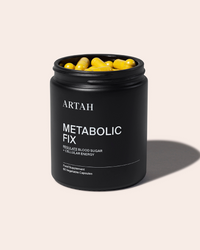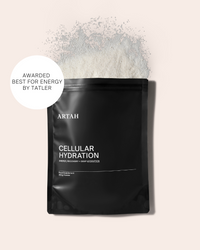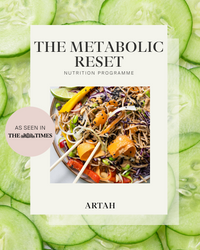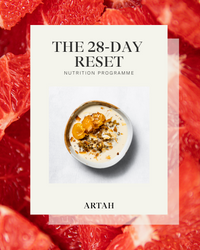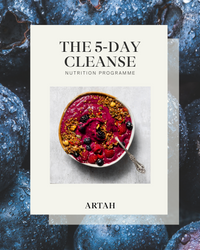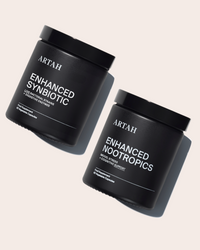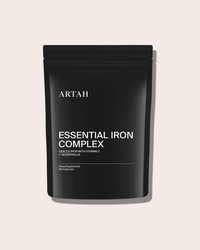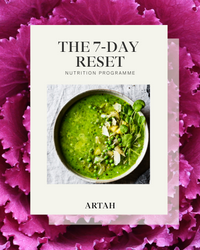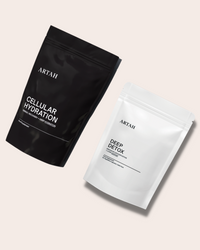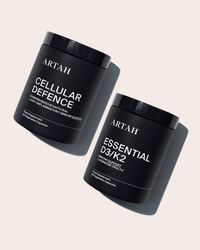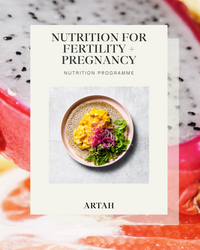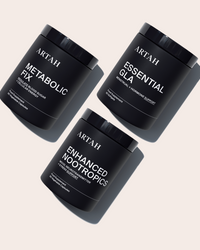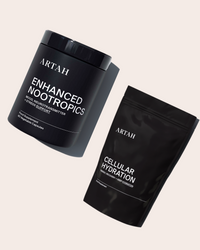Why Everyone Should Try a Food Diary: 7 Reasons We Think It's a Must
Tracking calories and macros can be a dizzying endeavour and is far from accurate (or fun). In fact, unless someone has a degree in nutrition or spends a significant amount of time learning about nutrition, it’s very difficult to estimate how many calories we actually get from our food. There are a variety of factors that affect this; for example, boiling vs baking a potato will change its total caloric value, we'll derive more calories from a ripe banana vs one that’s less ripe, we absorb 15-25% less calories from tree nuts than what’s stated on the packet and the list goes on. Our microbiome will also play a role; a healthy population of microbes will aid digestion and ‘steal’ certain calories for themselves, which is impossible to calculate on our own. There’s also the mental aspect; for many of us, tracking calories can carry a negative connotation from past weight loss efforts or body shame, and it can fuel unhealthy behaviour or obsession around food. So why do Nutritionists and Naturopaths insist on keeping a food diary? Because – it can provide invaluable information about how your food may be affecting your mood, metabolism, energy and more (and most of them won’t focus on calories at all).
First, let’s set the record straight. We’re not a fan of tracking calories either. It’s limiting, inaccurate and doesn’t take a lot of the most important nutritional principles into account. But, we ARE a fan of keeping a comprehensive food diary – at least once – to use as a tool to enhance your wellbeing. It can help you understand of how food makes you feel, identify obstacles that may be preventing you from hitting your health goals, learn about eating behaviours that may be sabotaging your progress and to check in on important nutritional parameters like fibre, protein, sugar and more. Here are 7 reasons why we think a food diary is a must.
To check your protein.
You’ve heard us say it before, but getting enough protein is key to maintaining good metabolic health. From appetite, energy and mood, to immunity, body composition and blood sugar regulation, protein is key - and a lot of us just don’t get enough. There are a few things to look at when assessing your protein intake; the quantity, the quality and importantly, how early in the day it’s consumed. Between porridge and smoothies for breakfast, IF’s and salads for lunch, it’s not uncommon to get to dinner without a decent serving of protein. If you’ve noticed yourself falling into this pattern, set yourself a goal of getting 20g of protein in before lunch and see how it can transform your metabolism.
To look at diet diversity.
Increasing the diversity of plant food in our diet is one of the best things we can do for the health of our microbiome, and a happy microbiome = a healthy metabolism. The goal is 30-40 different plant foods per week, which is easier than it sounds when you put your attention towards it. This number includes fruit, vegetables, herbs, spices, beans, peas, lentils, nuts, seeds and whole grains. If you’re finding this difficult, start with these top tips:
- Front-load your week with diversity.
- Use multi-ingredient dishes that help you tick the boxes. We love dal, soups and plant-based stew or curries.
- Make yourself a nut and seed mix to throw on salads, soups and smoothies.
- Different varieties of the same foods count, so try choosing different colours of your food staples, for example purple sweet potatoes if you usually choose orange or different coloured peppers.
- Add a crudité platter with different dips (hummus, baba ganoush, guacamole, salsa verde) + veggies a few times a week.
To check in on fibre.
Another incredibly important part of our diet is fibre. The recommendation is (at least) 30g per day, and the average intake in the U.K. sits at around 18g.(1) The good news is, if you’re focusing on diversity, you’ll likely be hitting your fibre goal. Even still, it’s important to hone in on fibre to make sure it’s where it needs to be. Individuals who practice IF or follow a low FODMAP, keto, highly processed or low-carb diet may not be getting enough. Fibre is going to be key for the health of the microbiome, bowel regularity, blood sugar control, satiety and appetite signalling, lipid balance (like cholesterol and triglycerides) and helps lower the risk of chronic diseases like cancer and cardiovascular disease. If you notice your fibre intake is low, start increasing slowly to give your microbiome time to adapt; dramatically increasing fibre can cause gastric discomfort, and it takes time to build tolerance. If you need some help while you work on diversity, adding 2 tbsp of ground flaxseeds to your daily regime will boost your intake by 6g. We love adding these to soups, salads and smoothies, or you can even take it mixed in water (although, this is less pleasant).
To see your sugar intake.
Sugar is sneaky. If you’re focused, it can be quite easy to avoid the obvious types of sugar-laden foods, but hidden sugar is pervasive, and when you dive into the labels of some of your favourite sauces, soups, cereals and snacks, you may be shocked at what you find. The average adult in Britan consumes around 100g per day, which is equivalent to 140 tsp per week! (2) The worst part is most of us don’t even realise how much sugar we’re eating because of how prevalent it is in the food supply. A lot of food that is advertised as (or perceived to be) healthy can contain a huge hit of sugar. If you have a usual breakfast or lunch spot at work, it’s important to check the website to see how much sugar is in some of your regular foods. For example, popular yogurt pots from high-street breakfast spots can have upwards of 30g of sugar per serving (2), which means you’ve hit 6 tsp of sugar before you even get to work. How much is too much? Officially, it’s best to avoid added sources of free sugars; this doesn’t include healthy sources of natural sugars like fruit though. Instead, look for things like corn syrup, fructose syrup, iso-glucose or glucose-fructose syrup, glucose, cane sugar, treacle, coconut sugar, etc., which are the sugars to avoid on a daily basis.
To monitor alcohol + caffeine.
These are usually the ones that creep up on us; how many times have we hit ‘reset’ and said we’re going to have less coffee or wine, only to realise a few months later we’re back where we started? The truth is, these are usually the most challenging (alongside sugar) because they’re socially accepted drugs, and like many drugs, they’re addictive. They’re not only physiologically addictive, but they’re also addictive from an experiential point of view because they’re often associated with pleasurable experiences (coffee in bed on a weekend may be one of the best things, ever). When you track these throughout the week, be specific about how much you have. For example, a tall coffee from Starbucks will have two shots of espresso, whereas a venti will have four. You can then look at things like sleep quality and feelings of anxiousness to see if they may be linked.
To notice autopilot snacking.
We’ve been trained to snack, but there’s a big downside to snacking. It can cause excess inflammation and be detrimental to our energy, digestion, gut health, blood sugar balance and more. (3) We also know that our microbiome needs time without food to maintain its health and be able to repair, so all in all, unless you’re pregnant, breastfeeding, or have been advised to eat more regularly by your doctor, regular snacking is best avoided. Tracking your snacking patterns can reveal a few key things. Firstly, on the days you snack, notice if the meal before your snack was big enough. Did it contain protein? Did it feel satiating? If not, this is the first thing you can look at to help you feel fuller for longer and avoid snacking. Secondly, was the meal before high in sugar? If so, your urge to eat may be from rebound low blood sugar, rather than an actual need for food. Thirdly, did you snack because you were truly hungry, or were you bored, triggered or anxious? (jot this down when you’re tracking). Or did you snack just because it was there? Finally, look at the type of snack you go for. Is it nutrient-dense, like crudites and dip or nuts and fruit? Or is it a premade bar with 4 different types of sugar, sweeteners and binding agents?
To notice how you feel (and how food affects it).
How we feel will influence everything we do, and how we feel will be influenced by everything we eat. Adding a layer of feeling to your food journal can help you uncover some big themes and potentially, help you refine your diet to reduce the foods or habits that are detrimental. There are three aspects of this that can be helpful to track.
- How you feel emotionally: jot down whether you are anxious, edgy, calm, down, happy, clear-headed, foggy, lack concentration, etc.
- How you feel physically: jot down your energy and any symptom you may experience, like headaches, bloating, constipation, wind, water retention, fatigue, skin rashes or flares in eczema etc. It’s a great way to spot ‘food hangovers’ which are common from things like MSG, excess sugar and gluten, or highly processed foods.
- Hunger: tuning into your hunger, cravings and feelings of satiety throughout the day can be extremely insightful, especially when you’re doing it alongside the food you eat. You may notice that on days you have eggs for breakfast you’re full until lunch, whereas on days you grab a porridge pot you’re starving by 10 am. If you notice constant hunger and cravings, you’ll likely be able to link it back to too much sugar, too little protein, not enough food, or a combination of all three.
Making a quick note of this each day adds a layer of depth to your tracking that can help you make changes that significantly improve how you feel on a day-to-day basis. If you notice a trend, you can then test this once you’ve completed your food diary to confirm if it’s a problem and adjust accordingly.
How to do it.
The best way to track your week will vary from person to person; some people like keeping a written journal, others will use the notes on their phone, or you may need more structure. So, we’ve created this easy-to-follow template to help you structure your food diary. It will also give you tools to help you assess your week and what your key takeaways are. You can download it HERE.
Here are some tips to ensure your diary is as insightful as possible:
- Track for 7-10 days, and make sure you include a weekend. Most people shy away from tracking weekends because they can vary from weekday patterns so dramatically, but this is precisely why they should be included. They make up 30% of your year, so it’s important to get a realistic view of what your norm is.
- For the week you track, focus on tracking your serving sizes but try not to adapt them if you notice they’re large (this will give you a more accurate overview of how you usually eat). We often have no idea how much we eat of foods like peanut butter, olive oil, butter etc. Get the tbsp out and for the purpose of this exercise, be specific.
- Try to get as much information as possible on any food that isn’t homemade. This won’t be possible at restaurants, but is easier at places like Leon, Pret and other chains that keep their nutritional information online.
- Jot down the times you eat. This can give you clues that can help you manage cravings, appetite, satiety and gut health.
- Finally, approach the exercise with curiosity, not judgement. Removing shame around food is essential for longterm health and enjoyment. Food logging can be eye-opening, but it is meant to be a tool to help you make positive changes that will benefit your health and well-being rather than something that makes you feel bad about yourself.
- If you need a little help implementing more plant diversity, reducing sugar, or need a reset, check out our nutrition guides, like The Metabolic Reset or The 28 Day Reset, which together have over 200, nutrition forward recipes to support and inspire you.
- To support your gut whilst you work on diversity, try Enhanced Synbiotic, which also has digestive enzymes to support digestion and help you acclimatise to more fibre.
References.
1. The Associations of UK Dieticians: Fibre Fact Sheet. https://www.uhnm.nhs.uk/media/3574/fibre.pdf
2. https://www.sheffieldmedicalcentre.nhs.uk/sugar-the-facts
3. Piya, Milan & Reddy, Narendra & Campbell, Alison & Hattersley, John & Halder, Louise & Tripathi, Gyanendra & Tahrani, Abd & Barber, Thomas & Kumar, Sudhesh & McTernan, Philip. (2014). Meal size and frequency influences metabolic endotoxaemia and inflammatory risk but has no effect on diet induced thermogenesis in either lean or obese subjects. Endocrine Abstracts. 10.1530/endoabs.34.P226.
This article is for educational purposes only and the implementation of the theories and practices discussed is at the sole discretion of the individual. All information given is not a substitute for medical advice, diagnosis, or treatment. If you have any concerns about your health, you should speak with your physician.






